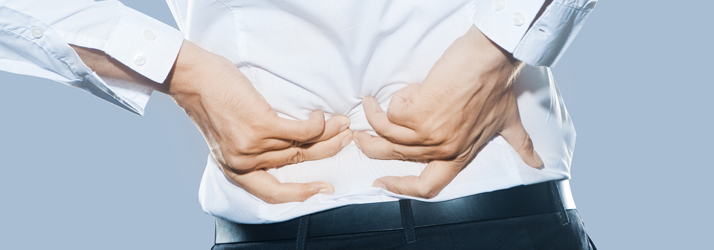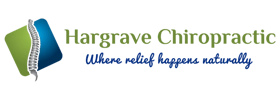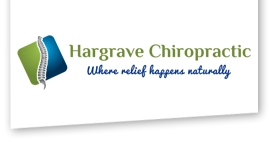Struggling with Back Pain?

Whether it is located in your lower or mid-back, most people will experience some form of back pain in their life. In fact, an estimated 32 million Americans are currently suffering from back pain at this moment. Back pain has become the #1 cause of disability in the United States and is quickly becoming a major concern for many people. This article will lay out what causes lower back pain, how to prevent it, and what the best form of treatment is once it has developed.
If you have any questions about our Breaux Bridge LA or Lafayette LA locations or would like to learn more about chiropractic care at Hargrave Chiropractic, our experienced chiropractic team at Hargrave Chiropractic is here to help.
Understanding Your Lower Back
Your "lumbar spine", or low back, is built up of five bones accumulated on top of each other with a shock-absorbing disc among each level. Your low back relies on tissues and ligaments for support. "Sprains" and "strains" are the outcome of these tissues being pulled too hard or too far, very similar to a rope that shreds when it is stretched beyond its natural capacity.
The term "sprain" means that the tough, durable ligaments that keep your bones together have been injured, while a "strain" indicates that your muscles or tendons that move your trunk have been partially torn.
Causes Of Back Sprains & Strains
Most people encounter low back pain at some time in their lifetime, and 70% of these cases can connect their symptoms to sprain/strain injuries. Lumbar sprains and strains may occur from unexpected or forceful movements like a fall, twist, lift, push, pull, direct blow, or promptly straightening up from a seated, crouched, or curved position. Most regularly, sprains and strains are not the outcome of any single event, but rather from reoccurred overloading.
The spine can usually handle small isolated stressors pretty well, but repetitive difficulties lead to injury in much the same way that steadily bending a piece of copper wire will cause it to break. Examples of these stressors include bad postures, sedentary lifestyles, poor-fitting workstations, repetitive movements, improper lifting, or being overweight.
Symptoms Of Sprains & Strains
Indications of a sprain/strain may begin abruptly but more ordinarily develop slowly. Symptoms may range from a dull ache to surprisingly debilitating pain that grows sharper when you move. Rest may reduce your symptoms but usually leads to stiffness.
The pain is regularly concentrated in your lower back but can reach towards your hips or thighs. Be sure to tell your doctor if your pain continues beyond your knee, or if you have a deficiency in your lower extremities or a fever.
Results Of Sprains & Strains
Sprain/strain injuries cause your natural healthy elastic tissue to be restored with less elastic "scar tissue." This method can lead to continuous pain and even arthritis. Patients who choose to forego therapy and "just deal with it" develop lasting low back pain more than 60% of the time. Exploring early and appropriate treatment like the type given in our office is critical.
Getting Over Back Pain
Depending on the severity of your injury, you may want to limit your movement for a while, particularly bending, twisting, and lifting, or movements that cause pain. Bed rest is not in your best interest. You should remain active and return to normal activities as your symptoms allow.
The short-term use of a lumbar assistance belt may be helpful. Sitting makes your back momentarily more exposed to sprains and strains from abrupt or unexpected movements. Be sure to use "micro-breaks" from your workstations for 10 seconds 20 minutes. Following acute injuries, you can use ice for 15-20 minutes per hour. Heat may be effective after several days or for more chronic sources of pain. Inquire your doctor for particular ice/heat recommendations. Some patients report partial aid and pain relief from sports creams.
Composition Of The Midback
Your spine is made up of 24 bones accumulated on top of each other with a soft "disc" connecting each segment to provide flexibility. Ordinarily, every joint in your spine should move freely and individually. To help imagine this, picture a healthy spine functioning like a large spring moving smoothly in every direction. A spine with a joint restriction is like holding a section of that spring welded together. The spring may still move as a unity, but a portion of it is no longer working as it should.
Understanding Joint Restrictions
Joint restrictions can occur in multiple ways. Sometimes they are taken on by an accident or an injury. Other times, they occur from repeated strains or poor posture. Being overweight, smoking, strenuous work, and emotional stress can make you more receptive to potential problems.
Restrained joints give rise to a self-perpetuating circle of pain. Joint restriction causes swelling and inflammation, which triggers muscular guarding leading to more major restrictions. Since your spine operates as a single unit, rather than as detached pieces, a joint restriction in one area of your spine often makes "compensatory" problems in another. Think of this as a rowboat with multiple oarsmen on every side. When one rower quits, the others are placed under added stress and can become overworked.
Causes Of Joint Restrictions
Joint restrictions most regularly cause local tenderness and pain. You may notice that your variety of movement is limited. Movement may increase your pain. Pain from a restricted joint often trickles around your rib cage or up & down your spine. Be sure to describe to your chiropractor if your symptoms include any chest pain, shortness of breath, unusual cough, indigestion or flu-like complaints.
Long-standing limitations and restrictions are thought to result in arthritis - much like the way a somewhat misaligned wheel on your car causes premature wearing of your tire.
Treating Midback Pain
You should realize that your problem is normal and commonly treatable. Chiropractic care has been proved to be the safest and most powerful treatment for joint restrictions. Our office gives several tools to assist in easing your pain. To speed your recovery, you should avoid exercises and activities that increase your pain. Be sure to take regular breaks from sedentary activity. Yoga has been shown to help back pain sufferers so consider joining a class or finding one online.



